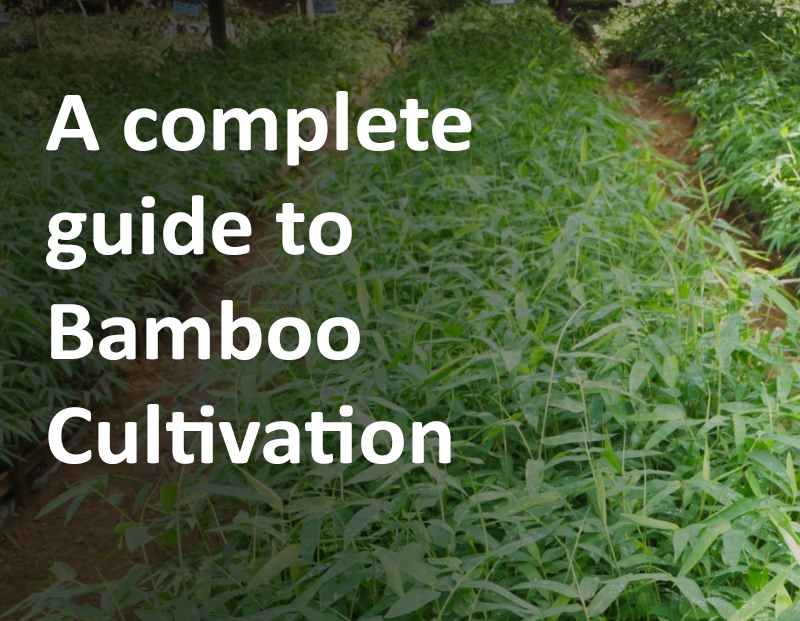A complete guide to Bamboo Cultivation
Table of Contents
After planting your bamboo saplings, it is essential to follow a proper growth plan to ensure their healthy development and optimal growth.
Here is a suggested bamboo growth plan after plantation:
Watering
For the first few weeks after planting, ensure that the soil around the bamboo remains consistently moist, but not waterlogged. Once established, bamboo typically requires
moderate watering, depending on the climate and soil conditions. However, during extended periods of hot or dry weather, more frequent watering may be necessary.
Mulching
Maintain a layer of organic mulch around the base of the bamboo plants to help conserve moisture, suppress weeds, and regulate soil temperature. Refresh the mulch as needed to maintain a thickness of 2-3 inches.
Fertilization
Bamboo plants benefit from regular fertilization to promote healthy growth. Apply a balanced slow-release fertilizer or organic compost in early spring and late summer, following the manufacturer’s recommendations or local agricultural guidelines.
Pest and disease control
Regularly inspect your bamboo plants for signs of pests or diseases. Treat any issues promptly to prevent the spread of infection and damage to the plants. Common pests include mites, aphids, and mealybugs, while diseases may include fungal infections such as rust or leaf spot.
Pruning
Prune your bamboo plants to maintain their shape and encourage healthy growth. Remove dead or damaged canes, as well as any canes that are growing too closely together or in undesired directions. Prune the lower branches to promote a more tree-like appearance if desired. The best time for pruning is usually during the dormant season or late winter, before new growth begins.
Thinning: Periodically thin out older or weaker bamboo canes to allow more sunlight and nutrients for the remaining canes, promoting overall plant health and vigor. This is usually done every 2-3 years, depending on the species and planting density.
Containment
Some bamboo species are invasive and can spread rapidly through underground rhizomes. To prevent unwanted spread, install a rhizome barrier around the perimeter of the
planting area. Alternatively, you can grow clumping bamboo species, which are less invasive and have a more controlled growth habit.
Monitor growth
Keep an eye on your bamboo plants’ growth and overall health, making adjustments to their care as needed. Depending on the species, bamboo can grow rapidly, so it is essential to maintain proper care and management practices.
By following a well-planned growth plan after planting, you can ensure that your bamboo plants thrive and reach their full potential, providing beauty, privacy, or valuable resources for years to come.
Read more: Bamboo Plantation Investment and Return on Investment
Read more: Steps of Bamboo Cultivation





